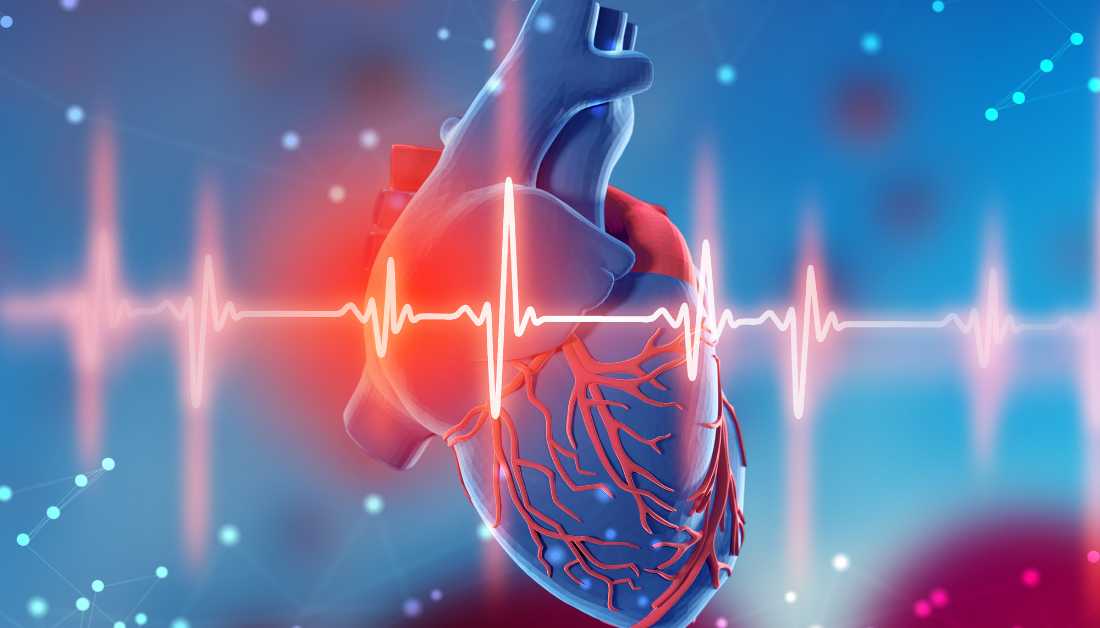

A groundbreaking study led by Dr. Mehdi Razavi at The Texas Heart Institute (THI) in collaboration with a biomedical engineering team led by Dr. Elizabeth Cosgriff-Hernandez at The University of Texas at Austin (UT Austin) Cockrell School of Engineering lays the groundwork for a ground-breaking treatment regimen for treating ventricular arrhythmia. Their research, which was published in Nature Communications, shows the design and viability of a new hydrogel-based pacing modality.
THI’s Electrophysiology Clinical Research & Innovations (EPCRI) team, led by Dr. Razavi, was inspired by the urgent need for an effective therapeutic regimen for ventricular arrhythmia to collaborate with Dr. Cosgriff-Hernandez and her UT Austin Biomedical Engineering (UT Austin BME) team to co-develop an innovative strategy that addresses the pathophysiology of re-entrant arrhythmia.
Ventricular arrhythmia is the largest cause of sudden cardiac death in the United States. It occurs in the lower chambers of the heart, or ventricles. When a heart rhythm problem occurs on its own, it is known as re-entrant arrhythmia, and it is usually fatal.
“Re-entry occurs mainly from delayed conduction in scarred heart tissues, usually after coronary artery occlusion during a heart attack, which can be corrected by enabling pacing in these regions. These hydrogels then can access the scarred tissue, thereby enabling direct pacing of the otherwise inaccessible regions of the heart.”
Dr. Mehdi Razavi, a practicing cardiologist and cardiac electrophysiologist
Hydrogels are being investigated as prospective electrodes that can be easily supplied inside coronary veins due to their biostability, biocompatibility, tunable characteristics, and simplicity of incorporation of electrical conductivity. The novel technique has the clinical advantage of avoiding ischemia by administering the hydrogel through veins.
The revolutionary hydrogel technology was successfully applied in a pig model using minimally invasive catheter delivery.
“The hydrogels have significant conductive properties that enable simultaneous pacing from multiple sites along the length of the hydrogel and create a conduction highway similar to those in Purkinje fibers,” according to Dr. Cosgriff-Hernandez.
Arrhythmia is now curable with medications and surgeries that regulate the erratic rhythms. Current anti-arrhythmic medications are not always successful; while they lower conduction velocity, they facilitate re-entry arrhythmia. Furthermore, these medications can be toxic, causing tissue destruction near the affected areas of the heart. Arrhythmia recurs in a high proportion of individuals after extensively utilized interventional ablation therapy. None of these approaches address the re-entry mechanism.
Cardiac defibrillators, which are implanted to compensate for gaps in current therapy options, are uncomfortable while delivering electric shocks to restore cardiac rhythm and can significantly reduce the patient’s quality of life. Arrhythmia, if not addressed, can cause damage to the heart, brain, or other organs, leading to stroke or cardiac arrest, in which the heart abruptly and unexpectedly stops beating.
“When injected into target vessels, the conductive hydrogel conforms to the patient’s vessel morphology. Adding a traditional pacemaker to this gel allows for pacing that resembles the native conduction in the heart – effectively mimicking the native electrical rhythm of the heart – and extinguishes the cause for arrhythmia, providing painless defibrillation,” added Dr. Cosgriff-Hernandez.
The study demonstrates for the first time the capacity to provide direct electrical stimulation of the native and scarred mid-myocardium as a pacing method using injectable hydrogel electrodes.
This study shows the feasibility of a novel pacing modality that resembles native conduction, potentially eliminating lethal re-entrant arrhythmia and providing painless defibrillation, that can be successfully adopted in a clinical workflow using minimally invasive catheter delivery and standard pacemaker technologies.
The scientific breakthrough is crucial because pain management is critical to overall wellbeing in individuals with heart, lung, and blood illnesses. Such advancements in painless defibrillation and arrhythmia prevention have the potential to change cardiac rhythm treatment.
more recommended stories
 Can Ketogenic Diets Help PCOS? Meta-Analysis Insights
Can Ketogenic Diets Help PCOS? Meta-Analysis InsightsKey Takeaways (Quick Summary) A Clinical.
 Silica Nanomatrix Boosts Dendritic Cell Cancer Therapy
Silica Nanomatrix Boosts Dendritic Cell Cancer TherapyKey Points Summary Researchers developed a.
 Vagus Nerve and Cardiac Aging: New Heart Study
Vagus Nerve and Cardiac Aging: New Heart StudyKey Takeaways for Healthcare Professionals Preserving.
 Cognitive Distraction From Conversation While Driving
Cognitive Distraction From Conversation While DrivingKey Takeaways (Quick Summary) Talking, not.
 Fat-Regulating Enzyme Offers New Target for Obesity
Fat-Regulating Enzyme Offers New Target for ObesityKey Highlights (Quick Summary) Researchers identified.
 Spatial Computing Explains How Brain Organizes Cognition
Spatial Computing Explains How Brain Organizes CognitionKey Takeaways (Quick Summary) MIT researchers.
 Gestational Diabetes Risk Identified by Blood Metabolites
Gestational Diabetes Risk Identified by Blood MetabolitesKey Takeaways (Quick Summary for Clinicians).
 Phage Therapy Study Reveals RNA-Based Infection Control
Phage Therapy Study Reveals RNA-Based Infection ControlKey Takeaways (Quick Summary) Researchers uncovered.
 Pelvic Floor Disorders: Treatable Yet Often Ignored
Pelvic Floor Disorders: Treatable Yet Often IgnoredKey Takeaways (Quick Summary) Pelvic floor.
 Urine-Based microRNA Aging Clock Predicts Biological Age
Urine-Based microRNA Aging Clock Predicts Biological AgeKey Takeaways (Quick Summary) Researchers developed.

Leave a Comment